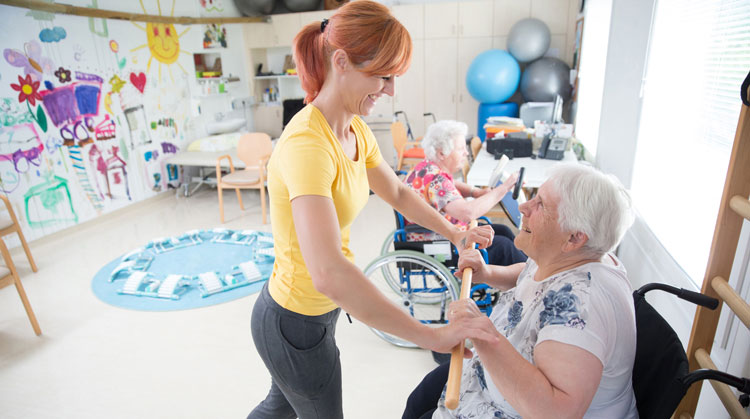In its proposed rule to provide the annual update to Medicare Part A reimbursement methodologies and rates for skilled nursing facilities (SNFs), the Centers for Medicare & Medicaid Services (CMS) confirms that the new reimbursement system – the Patient-Driven Payment Model PDPM) – significantly increased payments to SNFs (although CMS intended that PDPM would be budget-neutral) and led to dramatic declines in therapy provided to residents. Comments are due June 7, 2021. Use file code CMS-1746-P.
The proposed rule is expected to increase reimbursement by $444 million during fiscal year 2022. However, due to the SNF Value Based Purchasing Program, CMS estimates that rates will simultaneously be reduced by $191.64 million. The end effect is an expected increase of approximately $252.36 million.
As soon as the new PDPM reimbursement system was implemented on October 1, 2019, therapy minutes declined from 91 minutes per resident per day in FY 2019 to 62 minutes per day in FY 2020, a decline of more than 30%. In addition, the modes of therapy abruptly changed. Concurrent or group therapy increased from 1% in prior years to 32% and 29%, respectively, in the first month of PDPM. Physical and occupational therapy sharply declined, while payment for the three other case-mix related categories (nursing, speech language pathology, and non-therapy ancillaries [chiefly drugs]) significantly increased.
CMS reiterates that “financial motives should not override the clinical judgment of a therapist or therapy assistant or pressure a therapist or therapy assistant to provide less than appropriate therapy.” Id. However, CMS “did not identify any significant changes in health outcomes for SNF patients” resulting from the changes in therapy – no changes in falls with major injury, pressure ulcers, or hospital readmissions. Id.
CMS observes that PDPM increased payments to SNFs by 5.3%. CMS is considering a rate reduction of 5% ($1.7 billion), but it will likely delay or phase-in any payment reduction.
CMS proposes two new measures, beginning with FY 2023 for the SNF Quality Reporting System: the SNF Healthcare-Associated Infections Requiring Hospitalization measure (SNF HAI) and the COVID-19 Vaccination Coverage among Healthcare Personnel (HCP).
CMS notes that most healthcare-associated infections (HAIs) in SNFs are “preventable as they are often the result of poor processes and structures of care.” HAIs are associated with:
- Poor staffing levels (high staff turnover, low staff-to-resident ratios)
- Facility structure characteristics (national chain membership, high occupancy rates)
- Lack of adoption of infection surveillance and prevention policies
CMS reports that facilities’ failure to prevent and treat HAIs “is likely to result in poor health care outcomes for residents and wasteful resource use,” including “longer lengths of stay, use of higher-intensity care, . . . increased mortality, and high health care costs.”
Studies of COVID-19 find “higher patient spread due to poor infection control, staff rotations between multiple SNFs, and poor patient COVID-19 screenings.” Facilities with higher HAI rates also had higher COVID-19 rates.
CMS finds “infection prevention and control programs with core components in education, monitoring, and feedback on infection rates from surveillance programs or feedback on infection control practices from audits have been found to be successful interventions for reducing HAIs.”
The proposed measure looks at “the risk-standardized rate of HAIs that are acquired during SNF care and result in hospitalization.”
A third area discussed in the proposed rule is the SNF Value-Based Purchasing Program. Although the program currently uses a single “all-cause, all-condition hospital readmission measure,” CMS seeks public input on 13 measures under consideration: seven measures based on the minimum data set; four measures based on Medicare fee-for-service claims; one measure based on patient-reported outcome-based performance measure; one measure (Patient’s Experience of Care) based on a survey questionnaire; and one measure based on the Payroll Based Journal. Id. 20010-20011, Table 31.
To read the proposed rule, please go to: CMS, “Medicare Program; Prospective Payment System and Consolidated Billing for Skilled Nursing Facilities; Updates to the Quality Reporting Program and Value-Based Purchasing Program for Federal Fiscal Year 2022,” 86 Fed. Reg. 19954 (Apr. 15, 2021), https://www.govinfo.gov/content/pkg/FR-2021-04-15/pdf/2021-07556.pdf.
May 6, 2021 – T. Edelman
